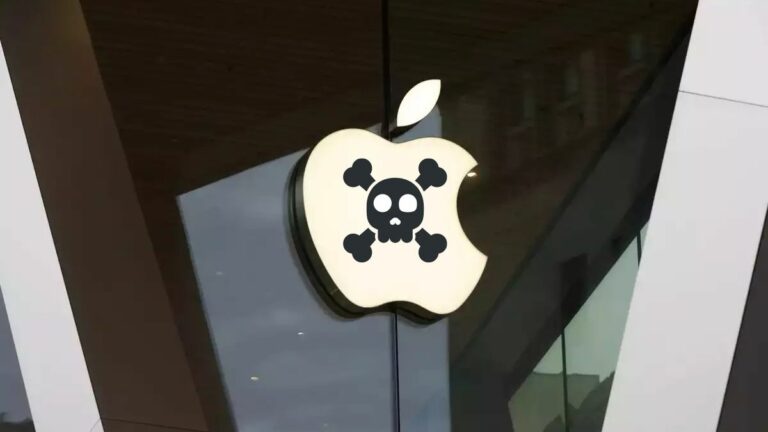Paul Cormier, Red Hat CEO: “Never Rest On Your Success. Be Paranoid.”

We had the utmost pleasure of interviewing Red Hat’s new CEO, Paul Cormier. After spending over 20 years at the world’s leading open-source software solutions, Paul is now taking charge at the helm of the company. Recently, he interacted with Fossbytes and told us about the company’s success, the current pandemic situation, how he successfully managed to jump over hurdles, and about the future strategies of Red Hat under IBM.
Interview With Paul Cormier, Red Hat CEO
On the Covid-19 Pandemic
First of all, you are by no means new to a leadership role. But coming in at the helm of the company at a time of this pandemic, this indeed is a first. Could you tell us more about how you and the company as a whole are coping with the situation?
From several perspectives. In the case of the state of this pandemic, we’re in better shape than a lot of companies are. We are very, very used to working remotely as a company. We always had a strategy as a company, especially on the product and engineering side, to hire the best people wherever they are. On the product side, there’s no leader in engineering having all their team even in one country, let alone one building. So I think from that perspective, being productive while we are all working from home, we’re probably in better shape than any other company in that scenario.
Secondly, from a customer perspective, since pivoting to the enterprise, we’re in a considerable proportion, even possibly 100 percent of the fortune five hundred companies, and they are staying in business. Many or most of them are running their business on Red Hat products. From that perspective, even though our sales and field people are remote as well now, we are still very engaged with our customer base and helping them to run their business.
I’m not saying that it won’t have any effect at all. I think every company in the world is assessing that right now every day. We are still very optimistic about where the company is going, even over the short term.
Tackling pressure
Red Hat owes much of what it is now to the revolutionary changes that you brought with the example of RHEL. Could you tell us what made you bet so much on that venture? And at the time, there were outrages from the whole Linux community. At a time of such immense pressure in your career, where did your best source for support came from to plow ahead through those testing times?
Probably two things, I was one of the very few people in the industry that had been in the enterprise software for a long time. I had worked in open source and saw its power way before a lot of people had. I started my career at Dec and Digital, and they had done a joint project with IBM. Digital, IBM, and MIT had done a project called project Athena. When I was young, I was a visiting engineer on that project. It was almost all open source, and I got to see the power of collaboration of open-source. At the same time, I had worked in an enterprise software company.
When I came to Red Hat, I saw the power of Linux, but there wasn’t a way to make money on it. And it’s not about being a capitalist or anything, it’s about being able to build a company that can move technology forward. To build a company, you had to have a profit. So the confidence I had was from the past.
But it’s also all the people we brought from Dec. At the time, we only had 30 people in the product group compared to the 7500 people we have right now. None of them had ever done commercial software before, but they were all community leaders. So we put the community leaders along with people from Digital, and they learned from each other. Then we talked to our customers, and they loved Linux, but they had issues with new hardware and software compatibility issues with the newer releases. So the combination of open-source engineers with commercial engineers and listening to our customers. It was a considerable risk as the company was a public company at that time.
Going back to 2001-02 and 2008, the world has faced an economic downturn, and now, of course, COVID-19 has again affected the global economy. But both the time the open source usage and adoption saw an upward curve and Red Hat winning large customer accounts like in the fiscal year 2008; Red Hat became the first open-source vendor to cross the $500 million mark in revenues. So how do you perceive and see this time as an opportunity to gain customers or losing end as most companies are spending less?
Our first marketing with RHEL was that we could give you something almost as good as UNIX for a fraction of the cost. That was the value proposition of Linux at that time. Over time, we went past UNIX in terms of functionality and reliability. Having said that, because Linux became so popular and because it was freely available, all the innovation over the last 15 years or so in infrastructure and developer space has been in and around Linux. From all the things you see today, Kubernetes all down, are all built around Linux. It wouldn’t have been possible with proprietary OS underneath, so that’s driven innovation.
So we have now moved from Linux being a commodity value proposition to an innovation valued proposition. That has changed dramatically, and that’s how we became a company – not by selling something cheaper but by selling something better and innovative.
Way forward
Talking about Red Hat, it’s all clear that you’re already a dominant player among the hybrid cloud and infrastructure industry. As of now, you lead Red hat alongside your teammates at IBM, where do you plan to take the company in the upcoming years?
We’re going to stay on the path we’ve been on. Hybrid cloud has been in the making for some time. When it first came out, vendors were saying that every app is moving to the cloud tomorrow. Even customers thought this was the case. But we knew that wasn’t practical. When customers started moving some applications to the cloud, they began to realize that they would never be able to do that. We are in the very early stages of the deployment of that. Lots of work to do. Lots of new projects. That’s where we’re are driving, and that’s why IBM acquired us.
You’ll see us do more products around it. But all of it will be around our current platforms and the value proposition around the hybrid cloud, which means making our customers have a common environment to run applications on physical, virtual machines, private cloud, or multiple public clouds.
Apart from the success stories, where do you think the company has come up short and how do you plan to mitigate them? What do you think would be your biggest challenge going forward?
One of the things is, when we first started with RHEL, we had to convince the world that Linux and open source was real, enterprise-ready, and secure. Many proprietary companies were saying that this was snake oil(chuckles), and we had to get through all of that. Even though the competition was not great, as it is now, over those years, Linux and open source have become mainstream. So now we have got competitors, most of whom are not open source even though they make themselves out to be. So we stay the course continuing the strategy we’ve been on since pivoting to hybrid cloud. From an IBM perspective, from talking to their customers, they recognized that hybrid was the only way to deploy, and that’s what we are all about.
To where we fell short, as it got more popular, we almost couldn’t keep up. We’re only a 15,000 people company, which sounds big, but now that all the big companies like Amazon, Microsoft, IBM are in the hybrid cloud, we can’t grow fast enough. And now that’s where IBM can help us scale up into more customers, more verticals.
Looking Back
Looking back at the journey, can you point out one point in your life that you felt like you had met real success.
I put my job on the line with RHEL as the Red Hat CEO at that time didn’t want to go ahead with its development. I bet him that in a quarter, we could do 8000 subscriptions, and we eventually did 32000. That was one of the first times I felt successful. Somebody once taught me a long time ago that only the paranoid survive. Even with all the success, I am still paranoid, and it’s a good thing. Never rest on your success.
For you, it’s been a long 20-year journey in the field. How do you think the philosophy of open source has changed over the years as we see a lot of open-source collaboration with propriety stakeholders like the overall love story of Microsoft and Linux?
It has changed a lot. A lot of the companies are open source because they feel they have to because of the customer demands and because that’s where all the innovation is happening. In the early days, with Linux, it was developer-centric even though it’s still the case in the upstream, you have a lot of consortiums or governing boards. Whether it’s CNCF (Cloud Native Computing Foundation) or The Linux Foundation, there has been a change in governance.
There are so many companies saying that they’re open, but in reality, everything below the line is open, but everything above is not. We’re the only company, especially at this size, that is a hundred percent open source, and that’s been in our DNA, and we wouldn’t have known to do it any differently. I haven’t seen any other company that has gone all-in on open source development as we have. I think we have done as much for the open-source community as we have done for customers in the industry as well.
Having achieved such great career successes in life, I think we would love to hear about some of the exciting experiences that have shaped you into the leader you are today.
I’ve been in technology and computers since I was 17 years old. I went to college undergrad while working in Digital and got my master’s graduate degree while working there as well, so I started very young. And because I was young, I interviewed for some jobs that I didn’t get, and then I went back and got some experience. Then I interviewed for ones which were beyond the ones I did before and got it. So I learned to be persistent, which anybody who knows me at Red Hat is that I can sometimes be persistent to a fault. I learned back then that when I did not get something I wanted, the best thing to do was to understand why that happened, to fix that and go back to do it again. Never give up.
That’s how we’ve driven our technology strategy. I think that’s why we were so confident with RHEL to bet the company on it. We knew that even if we didn’t get it 100 percent right out of the gate, we got most of it right, and we listened and iterated over that. That’s how the open-source community works. It iterates. Even when you look at Linux, Unix had been done way before Linux. Linux was different, but not all that different. When we first came out with RHEL, it wasn’t even close to what Unix could do.
Over the years, we persisted and iterated and got all these features in mainline Linux. I think persistence is the one crucial thing. Understand why it didn’t work in the first place, then change that even if it takes years and then try it again and again till you get it right. I learned that from my early days because I started so young in technology, and it’s been 45 years since.
Finally, reaching the end, we at Fossbytes are sure that you’ll lead Red Hat with the same compassion and enthusiasm. Lastly, we would love to hear whom you consider an inspiration or motivation among all past Red Hat CEOs and what’s the best advice that you have ever heard (professional/personal) that you would love to pass on to the current generation.
In terms of Red Hat CEOs, it has to be Jim. He came from Delta Airlines with no technology background, but the thing he did best is that he listened. It’s easy when you’re the CEO of a big company to think that you know better than everyone. But in his 12 years here, it was collaborative, and we worked together, and he listened well. Even when I pushed back on him, he was always ok with that and even welcomed that. Jim is very humble.
In terms of advice, I was very hard-charging. I remember he brought in some consultants to help us work together as a team. And one of the things I heard from my team members when they reviewed me was that I could be very hard-charging and sometimes offensive. My coach gave me that feedback and told me to tone it down a bit maybe but not so much that you lose your edge. So figure out how you stay hard driving while polishing it as needed. That was probably the best advice that I got.
About Red Hat, Inc
Red Hat is the world’s leading provider of enterprise open source solutions, using a community-powered approach to deliver high-performing Linux, cloud, container, and Kubernetes technologies.
(Source: Red Hat)






